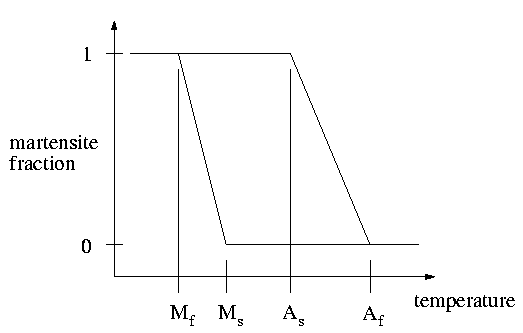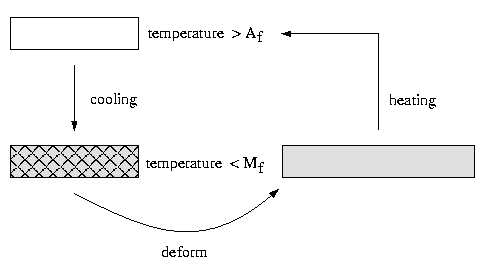
There are four characteristic temperatures defining a thermoelastic martensitic transformation; the martensite start temperature, Ms , at which martensite first appears in the austenite. The transformation proceeds with further cooling and is complete at the martensite finish temperature, Mf . Below Mf , the entire body is in the martensite phase, and a specimen typically consists of many regions each containing a different variant of martensite. The boundaries between the variants are mobile under small applied loads. With heating, the austenite start temperature, As , is the temperature at which austenite first appears in the martensite. With further heating, more and more of the body transforms back into austenite, and this reverse transformation is complete at the austenite finish temperature, Af . Above Af , the specimen is in the original undistorted state. The evolution of the volume fraction of the martensite with temperature is shown schematically in Figure 1.

Figure 1: Volume fraction verses temperature.
The shape memory effect is shown schematically below:

Figure 2: Shape memory effect.
The cycle is; at a temperature above Ms , the specimen is entirely in the austenite phase. Cooling to below Mf transformation the specimen entirely to the martensite phase, but the macroscopic volume of the specimen has not changed - a condition known as self-accommodation. With small loads the specimen can be easily deformed, and the deformed shape remains after removing the loads. Heating to above Af causes the reverse transformation to occur and the specimen returns to its original undistorted state.
Top of this page.
Back to main page.